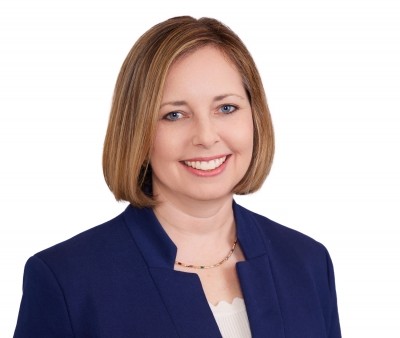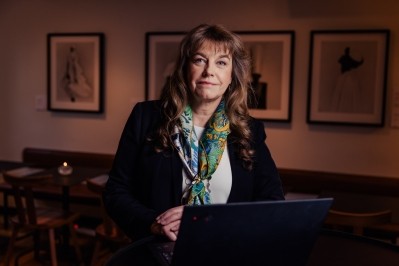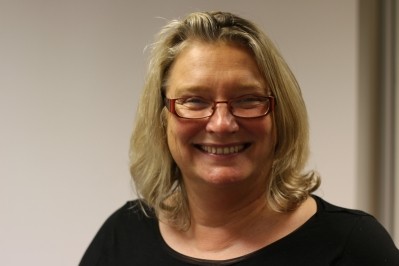Inspiration from The Sound of Music's von Trapp family influenced this week's woman in science

Here she explains all about the challenges and triumphs that saw her reach her position of chief medical officer at Curavit including her links to the Sound of Music's von Trapp family.
Could you give us an overview of your work?
I received my medical degree from the University of Rochester School of Medicine in 1985 and completed my General Surgery internship at the University's Strong Memorial Hospital one year later. I went on to complete my residency at Harvard Medical School and Massachusetts Eye and Ear Infirmary (MEEI) in 1990, graduating with all male residents, and then became a board-certified otolaryngologist/ head and neck surgeon. I remained affiliated with these organizations for over 30 years. I had the pleasure of caring for thousands of patients and teaching many medical students and residents while serving on the MEEI Board of Surgeons, MEEI Pharmacy and Therapeutics Committee, and the Atrius Health Site Council.
After nearly three decades of practicing medicine and observing the problems in clinical research, I pivoted sharply. I wanted to make a broader impact on healthcare by contributing to research and working to modernize clinical trials. Joel Morse, Dave Hanaman, and I co-founded Curavit Clinical Research in October 2019 when – like the rest of the world – we had zero premonition about the pandemic yet to come that would cause clinical trial activity to grind to a halt. Our timing was uncanny.
Curavit is a virtual clinical research organization (VCRO) that helped fill a huge hole during the early days of COVID by enabling life-changing clinical trials to continue remotely using digital technologies. Today, decentralized clinical trials (DCTs) continue and are moving from edge case to main case and scaling across the enterprise.
As co-founder and chief medical officer at Curavit, I spearhead the design and execution of decentralized clinical trials that are typically more patient-centric, convenient, and draw a more diverse participant pool. By recruiting participants from all 50 states, we are able to deliver better results faster to those who need it most.
I’m currently overseeing a dozen clinical trials and projects that aim to improve care for patients with diseases as varied as hearing loss, fibromyalgia, depression, cerebrovascular disease, cardiovascular disease, ADHD, social anxiety disorder, migraines and urogynecological disorders.
When did you realize you were interested in science - as a young child, teen, or older?
The youngest of five children from a small town in Rhode Island, I watched my parents battle chronic heart conditions for years under the attentive care of Dr Rupert Georg von Trapp – interestingly enough, the eldest member of Austria’s Trapp Family Singers who inspired The Sound of Music. I was inspired to make medicine my career from witnessing Dr von Trapp make such a difference in the lives of both my parents. He was a superb clinician and caring individual.
As a clinician, I generally focused on helping one patient and one family at a time. While this was very gratifying, I was drawn to the life-sciences industry where meaningful research can have a profound impact on many thousands of individuals at the same time – and can change the entire therapeutic approach to an illness.
Could you describe your personal journey bringing us to where you are now?
My 40-plus year journey from being a med student to a biotech entrepreneur came with banging down doors and breaking glass ceilings.
When I first told my high school guidance counselor that I wanted to go to medical school, he advised me to consider a nursing career instead. This was all it took for me to push through my first barrier and get into medical school at the University of Rochester in 1981.
After receiving my medical degree, I spent long days and nights with only intermittent hours of sleep during my general surgery internship at Strong Memorial Hospital at the University of Rochester. But, when I finally got my chance for a few precious hours of rest, I had to bang on doors…literally.
I was the only woman in a cohort of 20 interns, and the on-call room where we could recharge was in the back of the male doctors’ locker room. When I was on-call (at least every third night), I would have to bang loudly on the male locker room door, announce my presence, and creep awkwardly along the side wall with my eyes averted, head down, to get to the door of the on-call room where I could rest.
There was no female doctors’ locker room so I would change into scrubs in the nurses’ locker room.
Too exhausted to think too much about it at the time, I was vaguely aware that, as a woman, I was battling some subtle and not-so-subtle acts of discrimination to become a surgeon.
After completing my residency at Harvard Medical School and the Massachusetts Eye and Ear Infirmary (MEEI) in 1990, where I graduated with all male residents, I became a board-certified Otolaryngologist/Head and Neck Surgeon. Over the past 30 years, I’ve held various hospital appointments and spent years as a clinical instructor at Harvard Medical School.
While I thoroughly enjoyed being a physician, I was drawn to improving clinical trials and overall health equity. Seeing the potential for digital technologies to make a huge difference in clinical research, I catapulted from doctor to founder and chief medical officer of Curavit Clinical Research, where we are opening new doors at the intersection of digital technology and medicine.
At Curavit, we see a future where more clinical trial protocols will be designed from the outset with digital-first principles that enable greater access to clinical trials among all genders, races, and demographics. This future will accelerate clinical research and bring more life-saving medicines to more people for less cost and enable more pharmaceutical companies to invest in rare and ultra-rare disease studies because we can open trials up to people wherever they live.
What challenges did you face - as a woman or otherwise - along the way and what is the most valuable lesson you have learned?
At some point in our careers, most of us have learned to work with difficult personalities, and while it might not be easy, we find ways to manage these relationships. But one thing that can’t be tolerated is working with people who lack integrity or are dishonest. When you sense this is an issue, it’s time to move on as quickly as possible!
It’s also important to find an environment where you are respected and valued. If you feel like you're not welcome or wanted, and you're certain the circumstances won’t improve, it’s time to look for a better fit.
I also surrounded myself with mentors and colleagues who were incredibly supportive and would point out if they thought I was being treated unfairly because I was a woman (or for any other reason) and would help me navigate my way through it. At times, I was so deeply entrenched in my work that I didn’t even recognize possible discrimination or just thought everyone was playing by the same rules.
What ignites your passion in your current role?
I’m passionate about working toward ending disparities that exist in both the male-dominated technology world and in clinical research.
Unfortunately, the number of female participants in research falls short today, especially in three disease areas where women are affected most – cancer, cardiovascular disease, and psychiatric disorders, where 60% of people are female, but just 42% of trial participants are female. I envision a future where women and all minority groups are equitably represented in clinical trials across all therapeutic areas.
On a positive note, it’s hard to believe that the University of Rochester Medical Center, where I was once the only female intern in 1986, graduated a class of General Surgeons consisting of all women in 2017. And in that time, I broke through the glass ceiling to become chief medical officer and co-founder of a startup company, but I know I’m still in the minority…for now. Through my work at Curavit and personal advocacy, I aim to end these disparities both in the male-dominated technology world and in clinical research.
What is your current work ethos/style?
I like to foster a work environment in which employees feel empowered and trusted. I encourage them to make hard decisions and work to their fullest potential. If they come to me with a challenge, we work through it together. At this stage in my career, I prefer to work behind the scenes and let the employees who are still building their careers experience opportunities for growth.
Could you share some advice for young women starting to develop an interest in science or wanting to pursue a career like yours?
Dream big, follow your passion, and remain optimistic! Find a mentor and colleagues to support you through challenges. As mentioned earlier, I’ve surrounded myself with colleagues who have fully supported me, including the other Curavit executives, who appreciate the work being done by competent women in our field.
While there’s still work to be done, it’s important to note the significant progress women have made in science and medicine.
In 1985, only 2.8% of general surgeons in the U.S. were female. Today, those numbers are much different: Of the 32,876 surgeons employed in the U.S., 48.8% are women, while 51.2% are men. And strikingly, 38% of general surgery residents in the country are women.
I’m continuously inspired by the next generation of young women I’ve met along my journey and those I meet daily who are breaking down their own barriers as they pursue their careers in medicine and science.


















